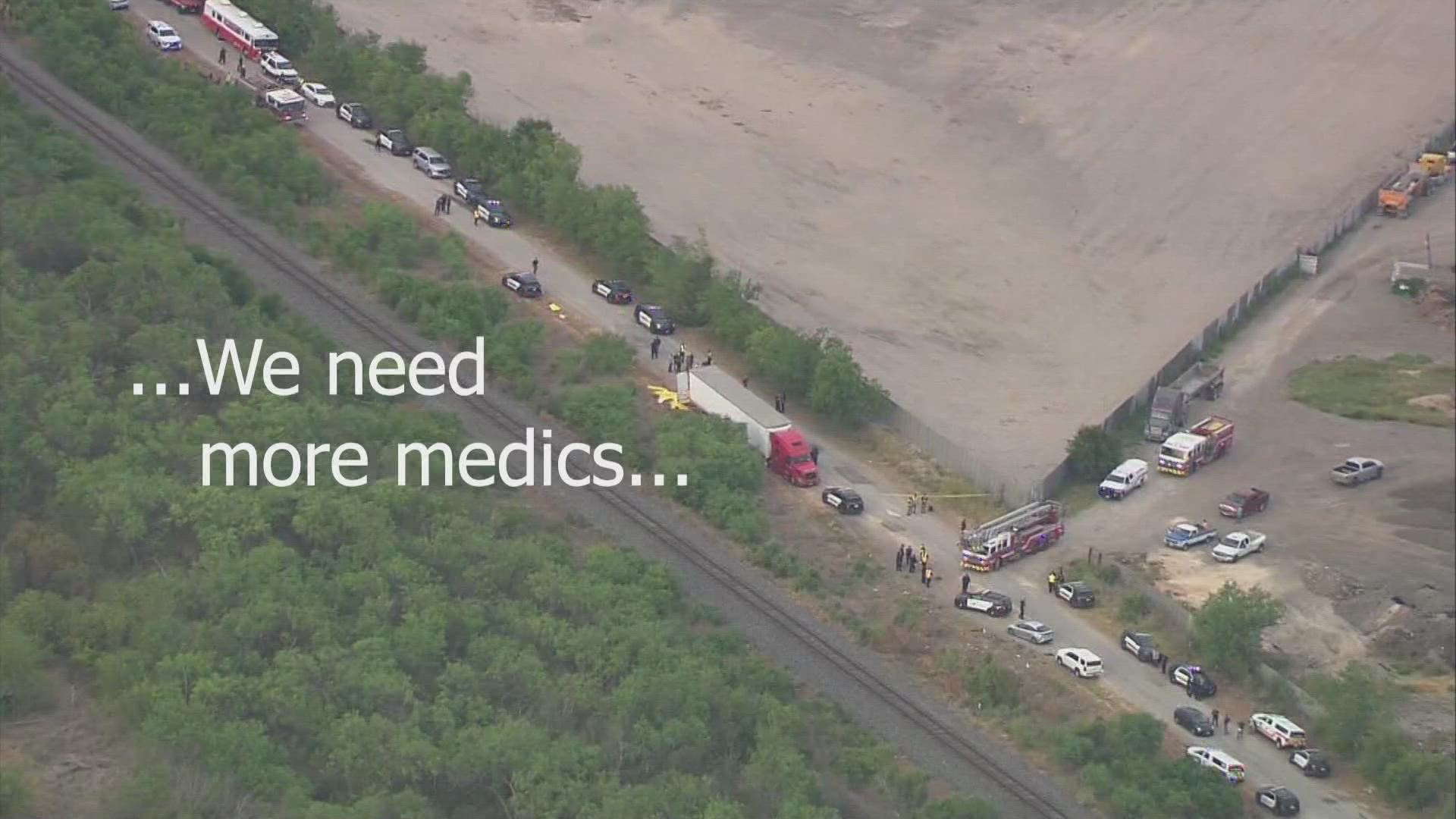SAN ANTONIO — The first call toned out by the fire department's monotone computer assisted dispatch voice coldly instructed San Antonio Fire Engine 52 to go to Quintana Road for a DOA, one deceased person.
Reviewing dispatch records on Broadcastify, it is evident that the response ballooned as soon as firefighters realized there were many more victims.
Monday's mass casualty incident put San Antonio's first responders to the test. At a time when they were still responding to heart attacks and major crashes across the city, here is a list of the SAFD personnel who were initially called to assist.
The first call for help was dispatched at 5:52 pm, and over the next 39 minutes, here are the responders in the order they were dispatched:
- Engine 52
- Battalion 2
- Medic 25
- Engine 25
- Medic 2
- Engine 2
- Engine 50
- Engine 44
- Medic Officer 5
- Medic 16
- Platform 11
- Medic 22
- Battalion 1
- Medic Officer 4
- Fire Safety Officer
- Ladder 2
- Fire Shift Commander
- Medic 29
- Medic 13
- Engine 21
- Engine 16
- Engine 11
- Platform 35
- Medic 7
- Battalion 6
- Medic 9
- Medic Officer 01
- Multi-patient vehicle 802
- Platform 11
- MSC
- Medic Officer 3
- Medic 44
- Medic 39
Listening to the dispatch logs is to look through a window into what Mayor Ron Nirenberg called a horrific human tragedy.
At the 6:01 time stamp, the first arriving firefighter from Engine 52 said "We've got an 18 wheeler. Looks to be about 60 people that are inside. It looks like quite a few of them are already deceased. We're going to start sorting through the ones that are currently breathing. None of them are able to talk as of yet."
The firefighter also said there were a number of victims with snoring respirations, which could indicate a person is near death. As the frantic work of triage continued, fire personnel were desperately looking for anyone they believed could be saved. One medic indicated everyone they found alive needed to be rushed to a hospital as fast as possible.
"All patients will be Priority 1. 12 are breathing. We're trying to take the ones that are breathing off the truck right now," the medic said.
They established a transport corridor to keep the long line of EMS ambulances moving and they sent more manpower to offload the truck faster.
One firefighter said "If you have any backboards, anything that would help us slide the patients off, bring them please. Even some tarps, salvage covers, anything that will help bring the patients out."
As they worked their way to the back of the truck, stacked with bodies, one firefighter said "I believe we're going to need more medics. So far I have about one, two, three, probably about six or seven more patients that I can see."
At the 6:17 p.m. mark, one firefighter who had worked his way deep into the truck could be heard saying "We're not finding any additional living persons."
A supervisor replied "Let's check each one for respirations. Make sure we haven't missed any."
Once the victims were on their way to medical care, firefighters turned their attention to the area near the truck, fearing that heat sick people could have collapsed in the thick brush nearby.
After a delay caused by a passing train, one commander said, "We've restarted the search. Walk the train tracks. Look 20 yards to the east and west. Don't go into the woods but just stay on the tracks and we are resuming the search."
The extended search turned up no new victims.
At the end of the search, they declared 42 people deceased on scene and said 16 people were rushed to the hospital.
Some of those people died overnight and the death toll continued to rise on Tuesday.
Fire Chief Charles Hood said all 60 firefighters who helped at the troubling scene would have access to after care. He said nobody comes to work imaging they would be dealing with what happened here.

